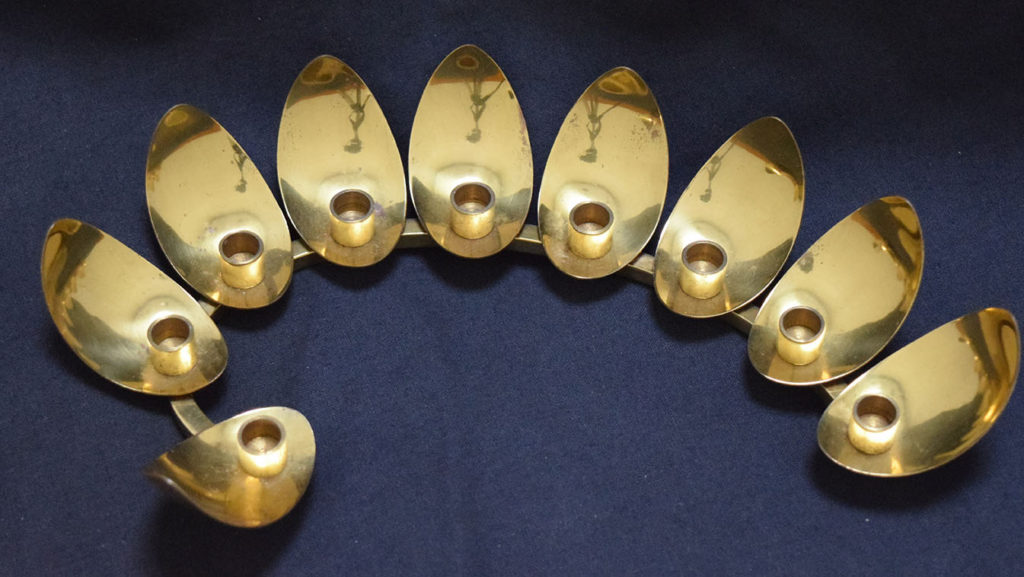Hanukkah Lamp
Ludwig Wolpert (1900-1981)
Brass
Jerusalem, ca. 1950
Signed in Hebrew “Wolpert Jerusalem” and in English “Israel”
Cincinnati Skirball Museum, B’nai B’rith Klutznick National Jewish Museum Collection, gift of Abram Kanof
This Hanukkah lamp was made by German-born Ludwig Wolpert (1900-1981) who studied sculpture and metalwork in Frankfurt before immigrating to Mandate Palestine in 1933. In 1935 he became a professor at the new Bezalel Academy for Arts and Crafts in Jerusalem. In 1956 he was invited to the Jewish Museum in New York where he established and was designated director of the Tobe Pascher Workshop, dedicated to the creation of modern Jewish ceremonial art. Wolpert is known for the simplicity and elegance of his graceful designs, exemplified here in the delicate leaflike troughs intended to hold the oil for lighting the Hanukkah lights.
Hanukkah commemorates the miraculous military victory in 165 BCE of a small number of Jews, led by Judah Maccabee, over the oppressive ruling Syrian-Greek government, which had commanded the Jews to worship only Greek idols under penalty of death. When the Maccabees reconquered Jerusalem, they found that the Syrian-Greeks had desecrated the Temple. The Maccabees cleansed and rededicated the Temple by lighting its seven-branched menorah, or candelabrum, with a small amount of oil that remained. Miraculously, the oil, enough for only one day, burned for the eight days of the Festival of Dedication—Hanukkah, in Hebrew. The story of Hanukkah is found in the Book of Maccabees, included in the Apocrypha, and in the Roman historian Josephus’s History of the Jews. Because of its late origin, Hanukkah is the only historically based Jewish festival without an account in the Torah, the Hebrew Bible.
For more than two thousand years, Jews around the world have reenacted the Temple rededication by lighting and blessing oil lamps, and more recently candles, for eight nights. The candleholder is called a Hanukkiyah, a Hanukkah lamp, or a Hanukkah menorah. The Hanukkiyah holds nine candles. One, called the shammash, or service light, is used to light the others. On the first night of Hanukkah, one light is lit, with an additional candle lit on each subsequent. Traditionally, the lighted Hanukkiyah is placed near a window in the home.

